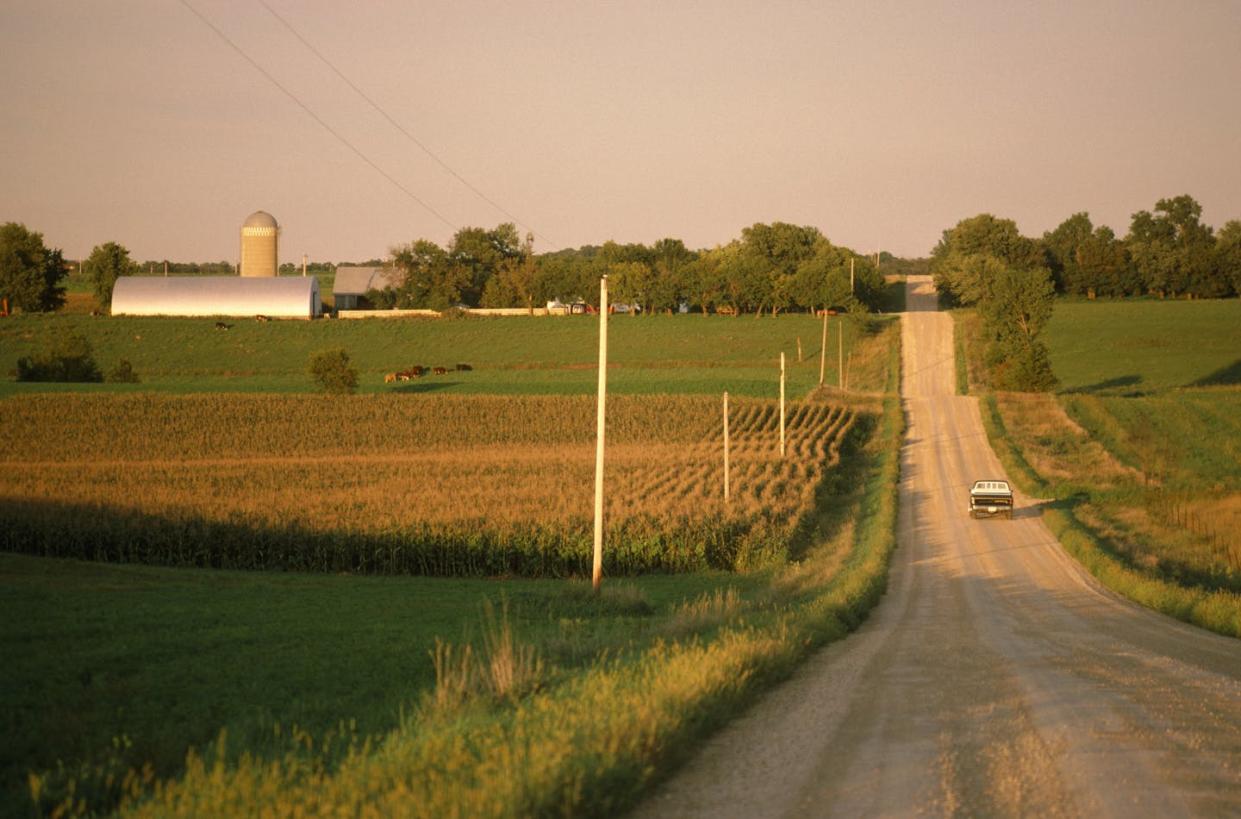For millions of Americans, high-speed internet is unavailable or unaffordable − a telecommunications expert explains how to bring broadband to the places that need it the most

Millions of Americans still don’t have access to high-speed internet. Christopher Ali, a professor of telecommunications at Penn State University, discusses who lacks access to broadband and how the federal government – with a US$65 billion commitment – is trying to bring more people online.
The Conversation has collaborated with SciLine to bring you highlights from the discussion that have been edited for brevity and clarity.
What is broadband internet?
Christopher Ali: Broadband internet, often just called broadband, is the technical term for high-speed internet connectivity.
The Federal Communications Commission, which is in charge of setting an official definition for broadband in the country, defines broadband as an always-on internet connection of 100 megabits-per-second download and 20 megabits-per-second upload.
But what high-speed internet fundamentally means to Americans is do we have the connectivity necessary to go about our digital lives. Can we stream Netflix? Can we go on Zoom? Can we file our taxes? Can we do our homework? Can we do our jobs? Can we game?
What can you tell us about disparities in broadband access?
Christopher Ali: One of the really frustrating things is, despite millions – tens of millions – of dollars spent on broadband mapping, we are still unsure of who is underconnected throughout the country.
Right now, the FCC reports that 7.2 million people lack access, but the commission numbers have been historically suspect. As a result, there are no doubt many more who are unserved and undercounted. In fact, the FCC repeatedly receives challenges to its broadband map.
Back in 2021, for instance, when the FCC reported that about 14 million people lacked internet access, an independent review found that 42 million people lacked access. That’s a huge discrepancy.
But one thing is certain: Broadband deserts are most often found in rural, remote and Indigenous areas.
It’s also clear that cost is part of the issue. Here in the U.S., we pay a tremendous amount of money – the most for internet access monthly than almost any other country in the developed world.
A program called the Affordable Connectivity Program subsidizes broadband for low-income families, and 50 million families across the country are eligible.
What benefits does broadband access provide?
Christopher Ali: Broadband access can aid with economic development. It can be a game changer when it comes to telehealth, especially for rural, remote and Indigenous communities, which often don’t have enough doctors and nurses. With telehealth, you can suddenly connect with a health care professional.
It aids in education. Some studies have found that access to broadband can impact grades and SAT scores, although there is disagreement about this. But the opportunities for students with broadband are undeniable – like applying online for college and student aid.
It contributes to civic engagement, allowing voters to contact local officials online. It impacts public safety, both in terms of our own safety as members of the public but also by allowing first responders to communicate online with their dispatch.
Broadband also helps sometimes with cultural enrichment, and we see this a lot with Indigenous communities, which can stream cultural and traditional events.
And it improves quality of life. Everyone enjoys being able to FaceTime with family and friends and go shopping online. These things were particularly essential during the COVID-19 pandemic.
The Broadband Equity, Access, and Deployment Program, passed as part of the 2023 infrastructure bill, allocates $42 billion in federal funds to expand broadband infrastructure. How can communities maximize its impact?
Christopher Ali: The money from the BEAD program is going to be managed by the states and not by the federal government. Each state receives a chunk of money, depending on the number of people who are unconnected. Texas, with more than 1 million unserved or underserved locations, will get $3.3 billion, the most of any state. Pennsylvania will get about $1.2 billion.
What states have done a particularly good job expanding broadband access?
Christopher Ali: Minnesota has done some amazing work over the past decade. As I discuss in my book “Farm Fresh Broadband: The Politics of Rural Connectivity,” Minnesota was one of the earliest states to create a broadband grant program – the Border-to-Border program – and has set really ambitious targets. Back in 2016, for instance, the state set up a goal of universal coverage at 100Mbps/20Mbps by 2026.
Another state is Virginia, which really got a wake-up call during the pandemic, and it mobilized a lot of the federal money that came down the pipes to empower counties, cooperatives and local ISPs.
Vermont has done something called communication union districts. They’ve allowed communities to come together to use public funding to deploy broadband networks.
Public networks are going to be a game changer because they empower communities to connect themselves and direct their own digital futures – either with municipally funded networks, or cooperatives, or some sort of public-private partnerships.
Watch the full interview to hear more.
SciLine is a free service based at the American Association for the Advancement of Science, a nonprofit that helps journalists include scientific evidence and experts in their news stories.
This article is republished from The Conversation, a nonprofit, independent news organization bringing you facts and trustworthy analysis to help you make sense of our complex world. It was written by: Christopher Ali, Penn State
Read more:
Digital textbooks expand learning for engineering students - South African study
Rural students’ access to Wi-Fi is in jeopardy as pandemic-era resources recede
Christopher Ali does not work for, consult, own shares in or receive funding from any company or organization that would benefit from this article, and has disclosed no relevant affiliations beyond their academic appointment.

 Yahoo News
Yahoo News 
